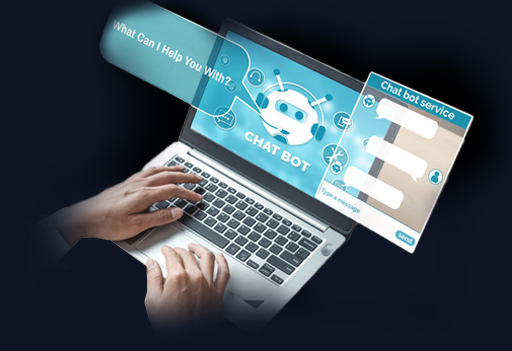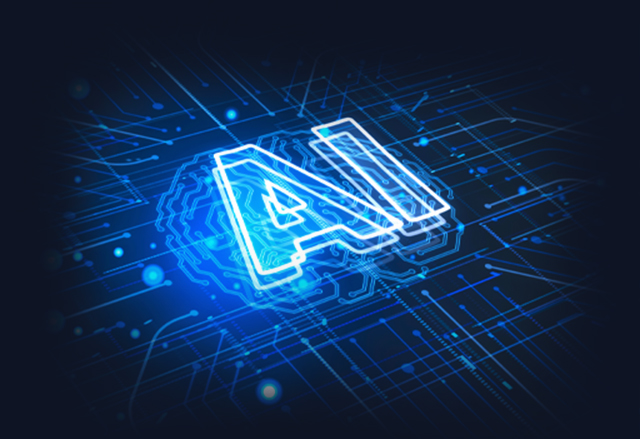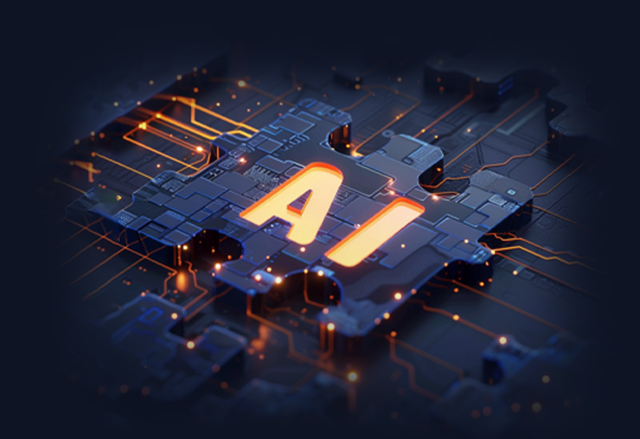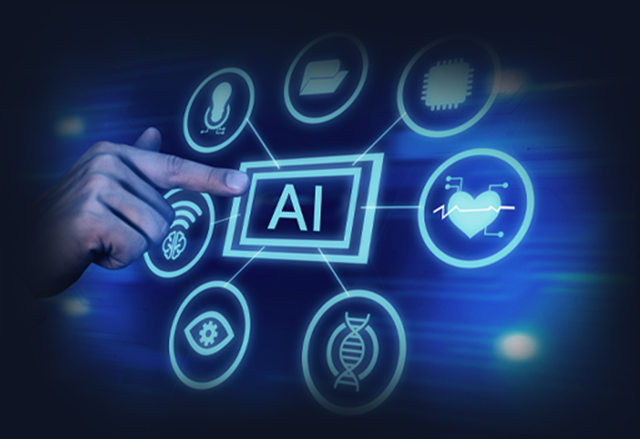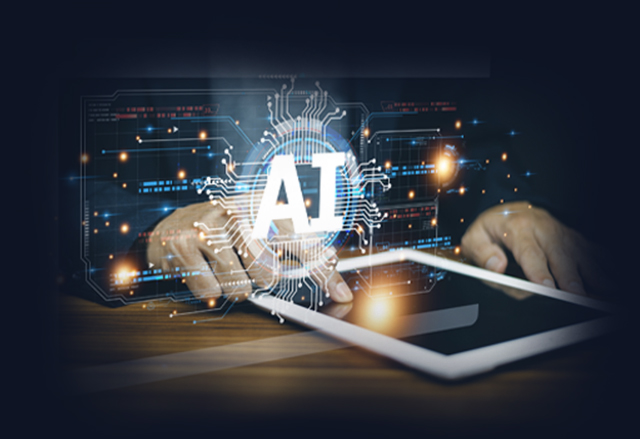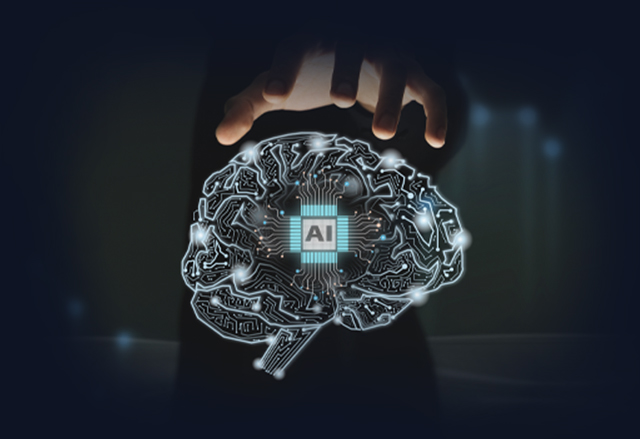Chatting With The Future: Your Ultimate Guide To AI Chatbots

"AI" is the buzzword of the century, captivating minds and transforming industries across the globe. We've all encountered the power of artificial intelligence (AI) at some point, whether it's in the convenience of our smartphones, the recommendations on our favorite streaming platforms, or the autonomous features of modern vehicles.
Yet, among the many AI-powered technologies that are shaping our world, one fascinating technology stands out, the rise of AI chatbots. These virtual conversational agents are revolutionizing the way we interact with technology, seamlessly merging the capabilities of AI and natural language to create personalized and engaging experiences.
In this article, we delve into the remarkable realm of AI chatbots, exploring their origins, capabilities, and the profound impact they wield across various domains.
AI Chatbots: What Are They?
Chances are, as long as you are using the internet, you have encountered AI chatbots already. Whether you've tried to purchase an item online or you tried to get ChatGPT to write you a business email, some way or another, you've taken advantage of one of today’s fastest emerging technologies, the AI chatbots. But what are AI chatbots, really?
AI chatbots are like friendly digital helpers that use artificial intelligence to have conversations with you, just like you'd chat with a friend. They can answer your questions, provide information, and assist you in various ways, all while understanding the way you talk. These chatbots use smart technology to understand human language and give you helpful responses that make sense in the context of your conversation. You might find them on websites, messaging apps, or even in virtual assistants, making it easy and fun to get the information and help you need right when you need it!
Under The Hood: How Do AI Chatbots Work?
Artificial Intelligence (AI)
Just as the name suggests, Artificial Intelligence (AI) has one, not-very simple, goal. Its ultimate purpose is to artificially create machines smart enough to mimic human intelligence. When we say machines, we mean both the software applications and the physical hardware of the machine.
Simply, AI involves every case in which a machine does a task mimicking the human brain. This can vary from ChatGPT writing you some poetry to a car driving itself or a robot doing home chores and running errands.
Natural Language Understanding (NLU)
What about the term Natural Language Understanding (NLU)? What does it mean? And why are we hearing it more often these days? Again, the name is self-explanatory. NLU is a subfield of AI with a focus on understanding human languages.
Say you are on your coffee break in the middle of a busy work day. You went out to the new shop nearby to make an order. After a long waiting time, your coffee was served cold. You left feeling frustrated and wanting a refund. The coffee shop has an online website with an AI chatbot for customer service. You open the website to make your complaint.
You want the AI chatbot to actually understand that there was a buying process, made by you, with the purpose of purchasing an item, coffee in this case, and there was a problem encountered, the coffee coming out cold, making you feel frustrated and wanting the company to give you compensation in the form of money. The great news is NLU makes it possible for the AI-powered chatbot to understand all of that and have a full human-like conversation.
AI Chatbots' Learning: Machine and Deep Learning Techniques
To put it simply, here's how AI works behind the hood. Imagine a black box. This black box has one job. It takes an input, does some magic, and gives you the output you are after. Except there's no real magic involved here. Replace that with mathematical algorithms, and you have your AI model. The idea is to take data as input, along with its corresponding output, and let the machine figure out the rule or discover the patterns in this data using mathematical concepts.
This is exactly how conversational AI learns. They are given data and left to figure out the meaning of this data on their own. They learn what the data means in a process called training. When you use one of the conversational chatbots, you enter a question, and the bot takes your words and analyzes them to understand your intent, tone of voice, and the sentiment of your question. It tries then to come up with an answer relevant to your question.
The mathematical algorithms behind the AI chatbot you use can vary between machine learning (ML) and deep learning (DL) techniques. ML covers various techniques, including traditional methods, while DL specifically uses deep neural networks. ML may need manual feature selection, has diverse algorithms, is interpretable, and can work with more minor data. DL excels in learning complex patterns from extensive data, requires substantial data and powerful hardware, and can lack interpretability due to its intricate neural network structures. The choice depends on data, problem complexity, and desired outcomes.
The Two Types of AI Chatbots (LLMs vs. NLU)
Speaking of AI chatbots, these are not all the same. From a technical perspective, there are two main types, LLMs and NLU-driven chatbots. They both have different use cases, strengths, and weaknesses.
A large language model (LLM) is a general language model, meaning it's trained on a huge amount of general data with the purpose of learning how to generate text. Their training on enormous general datasets acts as both a blessing and a curse, depending on the use case. They excel in their role of text generation with the ability to produce human-like interactions with emotions between the lines instead of robotic paragraphs. Their downfall comes when you try to use them for a very specific purpose. Their generic training data makes it easy for them to hallucinate and make up imaginary answers with misleading confidence.
This is when NLU-driven chatbots come to the rescue! They are more personalized chatbots that work best for specific knowledge domains. They are trained on smaller, more specific datasets, making their responses less generic and more business-specific. They don't claim that they know the answer to everything. They admit it when they come to a halt.
Does this mean NLU-driven chatbots are superior to LLMs? Not necessarily. It all comes down to your use case. If you want a creative director, you pick the LLM. However, if you are in need of a subject matter expert, NLU is your go-to.
AI Chatbots: Evolution Through the Years
The attempt t for chatbot implementation that mimics human behavior has been going on for decades. Let's take a quick look at the history of AI chatbots and how they evolved throughout the years from simple answers to yes and no questions to writing a poem in the style of your favorite poet.
Early Attempts
- ELIZA (1966): Created by Joseph Weizenbaum, ELIZA was one of the earliest chatbots. It used pattern matching to engage in text-based conversations, simulating a Rogerian psychotherapist. While relatively simple, ELIZA demonstrated the potential for chatbots to engage users in human-like conversations.
- PARRY (1972): Developed by Kenneth Colby, PARRY was designed to simulate a paranoid schizophrenic and engage in psychiatric conversations. It showcased early attempts at simulating human behavior and responses.
- Jabberwacky (1988): Developed by Rollo Carpenter, Jabberwacky used learning algorithms to improve its conversational abilities over time. It demonstrated early AI capabilities to adapt and learn from interactions with users.
- A.L.I.C.E. (1995): Created by Dr. Richard Wallace, A.L.I.C.E. (Artificial Linguistic Internet Computer Entity) was an early chatbot with natural language processing (NLP) capabilities. It won several awards in the Loebner Prize competition, demonstrating significant progress in chatbot technology.
Advancements in NLP and Conversational AI
We've seen how the idea of creating a human-like bot has been around for ages. Yet, what changed? Why did the revolution only take place in recent years?
There are two aspects to the huge progress in the NLP and conversational AI field. The first is the magic word, data. We live in the age of digital data. We live in a world where we are surrounded by data from the moment we pick our phones up in the morning to the second we go to sleep. NLP models need lots and lots of data to be trained. And what is a more suitable time to train said models than the age of digital data itself?
The other reason comes back to the hardware capabilities. Training NLP models need powerful hardware that wasn't always around for us to use. With the advancement in the hardware industry, we can now use powerful GPUs and RAMs to accomplish what we couldn't before.
Finally, all of these factors combined with continuous research and development in the AI field enabled us to come up with superior NLP models such as the famous ChatGPT. OpenAI GPT-3 was developed by OpenAI and represented a breakthrough in large-scale language models. It demonstrated the ability to generate human-like interactions and perform various tasks, including chatbot interactions, at an unprecedented scale.
Applications of AI Chatbots
It's no secret how the applications of AI chatbots are expanding every day to transform the world around us and accentuate the digital transformation we are all witnessing. This can range from the AI chatbot you encounter while purchasing a new item online to the chatbot that gives you a medical diagnosis and mental health support. Chatbot deployment is around us everywhere, so here are some examples:
Customer Service and Support
AI chatbots have broken into the world of customer service and support for a while now. At first, we only had rule-based chatbots to count on for this digital transformation. However, the main pitfall of rule-based chatbots was the lack of their ability to hold human-like interactions. They were very limited in the answers they could provide. They could only offer a set of previously programmed answers, making the experience frustrating for some customers who felt like they were only talking to a robot. But then, Conversational AI came around and completely changed the game; let’s see how!
Benefits of Using AI Chatbots in Customer Service
- Works Around The Clock: The most obvious advantage of using AI chatbots in customer service is their constant availability. customer service chatbots are ready to serve your customers 24/7. They don't need holidays or breaks. They don't have limited work hours, and they're available even in times of crisis. Besides, they are never grumpy after a long day of work, so your customers are guaranteed a pleasant experience every time they contact your customer support.
- Responds in The Blink of An Eye: Customers hate nothing more than waiting; they usually don’t have the time nor the patience to wait for hours for an employee or a customer support agent to pick up their complaint. That’s where AI chatbots come in; they provide your customers with instant responses, saving both of your time. Hence, a happier, more satisfied, and ultimately loyal customer base.
- Less Workload: The constant availability definitely takes a huge workload off of your employees' shoulders. Therefore, it gives human agents more time to focus on the more crucial and creative aspects of their work.
- Human-Like Conversations: As we’ve established, the problem with rule-based chatbots was how robotic they sounded and their lack of understanding of human emotions. However, AI chatbots show a significant improvement in mimicking human conversations. With the advancement of NLP, NLU, and sentiment analysis, conversational AI can now understand the user intent, tone of voice, and sentiment, making the overall experience much more human-like.
E-Commerce and Personalized Shopping
One of the most notable applications of AI chatbots in e-commerce is their role in creating personalized shopping experiences. Similar to how recommendation systems analyze a user's search history, browsing history, conversation history, shopping behavior, and preferences, AI chatbots employ the same strategy. By using advanced algorithms and machine learning techniques, they can sift through vast amounts of data to understand the customer's unique needs and preferences.
When a user interacts with an AI chatbot, the chatbot processes and analyzes the input, drawing from the user's digital footprint to provide personalized responses. For example, if a user often searches for sustainable products, the chatbot will prioritize recommending eco-friendly items. Similarly, if a user has shown a preference for a particular brand or product category during their conversation history, the AI chatbot will tailor its recommendations accordingly.
This ability to deliver a highly personalized experience not only enhances customer satisfaction but also drives sales. Customers are more likely to make a purchase when they feel understood and valued, and AI chatbots excel at creating this personalized experience.
Healthcare
AI Chatbots in Medical Diagnosis and Treatment
AI chatbots are increasingly being utilized in medical diagnosis and treatment. They play a crucial role in providing efficient triage and initial diagnosis suggestions based on patient symptoms and medical history. These chatbots offer personalized medical advice and education to patients, helping them understand their conditions better. Additionally, AI chatbots can be integrated with wearable devices for remote monitoring of patient's vital signs and health metrics.
Mental Health Support through AI-Powered Conversations
AI-powered conversations offer mental health support by providing a safe and non-judgmental space for users to express their feelings and offering valuable information and coping strategies. They are available 24/7, enabling timely assistance and early intervention. However, they should complement human therapists and not replace them. Overall, AI-powered conversations hold the potential to reach more individuals in need of mental health support.
Business and Productivity
AI chatbots have proven to be invaluable tools for task automation and workflow management in the realm of business and productivity. By leveraging artificial intelligence, chatbots can streamline repetitive tasks and facilitate seamless communication within organizations. They can automate routine processes like appointment scheduling, data entry, and customer inquiries, freeing up human resources to focus on more strategic and value-added activities.
Additionally, AI chatbots serve as virtual assistants, providing real-time information, guidance, and reminders to employees, thereby improving efficiency and reducing the likelihood of errors. In workflow management, these chatbots can track project progress, assign tasks, and send notifications, ensuring smooth collaboration among team members.
By optimizing task automation and workflow management, conversational AI and productivity chatbots contribute significantly to enhancing overall productivity and driving business success.
The Future of AI Chatbots
Improving Natural Language Understanding (NLU) and Generation (NLG)
Improving Natural Language Understanding and Natural Language Generation is a key focus for the future of AI chatbots. Advancements in NLP models, such as GPT-3, have already shown promising results. Future developments will aim to enhance chatbots' ability to grasp context, understand nuances, and respond more accurately to user queries.
To achieve this, researchers are exploring larger and more diverse training datasets, incorporating domain-specific knowledge, and fine-tuning models for better performance. Furthermore, advancements in unsupervised learning techniques, multimodal NLP, and continual learning will contribute to making chatbots more versatile and adaptable to different domains and user preferences.
Ensuring User Trust and Transparency
Ensuring user trust and transparency is crucial for the present and future of AI chatbots. To achieve this, developers are focusing on explainability, user consent, data privacy, bias mitigation, human oversight, clear communication, regulatory compliance, and feedback mechanisms. Prioritizing these aspects creates optimal user experiences and fosters broader adoption of AI chatbots across different domains.
Potential Advancements and Trends
The future of AI chatbots promises exciting advancements, including improved NLU and generation, emotional intelligence, multi-modal capabilities, personalization, continuous learning, IoT integration, domain-specific expertise, ethical AI, and interconnected ecosystems.
These developments will make chatbots more intelligent, adaptable, and user-centric, revolutionizing interactions with technology and enhancing various aspects of our lives. With these ongoing improvements, the future of AI chatbots is likely to offer even more seamless and natural interactions, further bridging the gap in human and machine communication and opening up new possibilities for personalized and contextually relevant experiences.
AI chatbots have had a profound impact on various aspects of our lives. They have transformed customer service, healthcare, e-commerce, and various other industries by offering efficient, personalized, and round-the-clock assistance. They have improved productivity, streamlined workflows, and enhanced user experiences.
Furthermore, with careful development and deployment, they are poised to play an even more significant role in shaping the way we interact with technology and each other in the future.
Frequently Asked Questions (FAQs)
How do Arabic chatbots differ from chatbots in other languages?
Arabic chatbots differ due to complex language structure, script, and cultural nuances compared to chatbots in other languages.
How can businesses ensure that Arabic chatbots maintain cultural sensitivity?
Businesses can ensure cultural sensitivity in Arabic chatbots by involving native Arabic speakers in chatbot development, incorporating region-specific etiquette, and conducting continuous cultural awareness training for the chatbot's responses.
Why do multilingual chatbots matter?
Multilingual chatbots matter because they enhance global reach, provide personalized experiences in language variety, and foster better customer engagement and satisfaction.


